The Ultimate Guide to Kitchen Taps
Bubbly, boiling, or brushed brass? Tap into the options.
If so, you’ll be in safe hands with Adamson’s. Got a question, want an idea of price or ready to book your FREE home design visit?
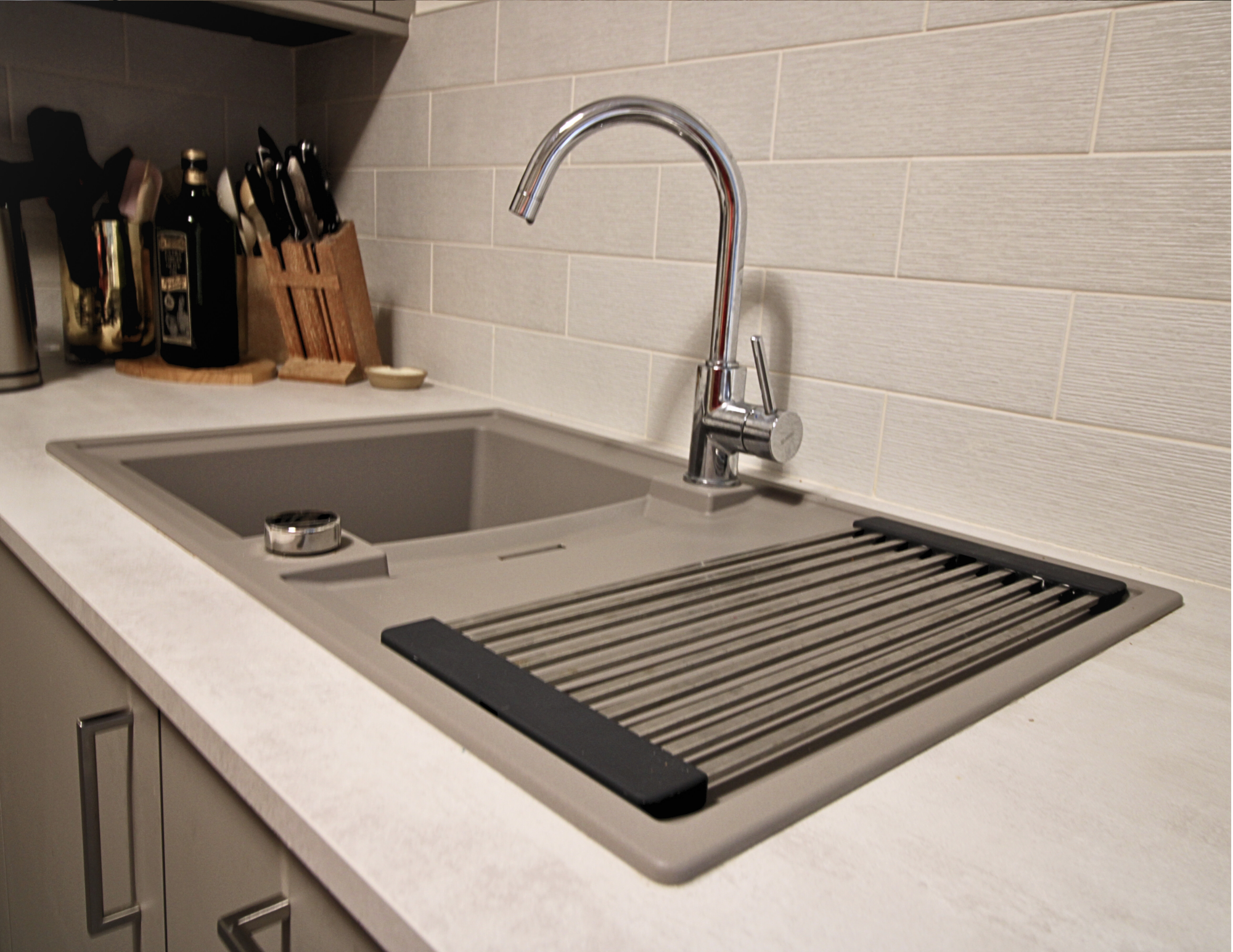
Your kitchen sink and tap are used countless times a day but that doesn’t mean they should blend into the background. These essential elements are a huge part of how your kitchen looks, feels, and functions. Whether you’re washing up after a family roast or rinsing veg from the garden, choosing the right sink is crucial to create a kitchen that works for you in the long run. Let’s explore the options.
Your sink can be a statement piece or subtly integrated but its design plays a big role in how the kitchen feels to use. Here’s a closer look at some of the most popular styles we install:
A nod to heritage design, these sinks are known for their deep, boxy shape and exposed ceramic front. Belfast sinks typically feature an overflow, while Butler sinks traditionally do not.
They’re ideal for homeowners who love a classic, country-inspired kitchen or anyone who needs a generously sized sink that can comfortably soak oven trays or wash bulky pans. Typically made from fireclay and in a gleaming white finish, these sinks contrast beautifully with natural wood, shaker-style cabinetry, or dark painted units.
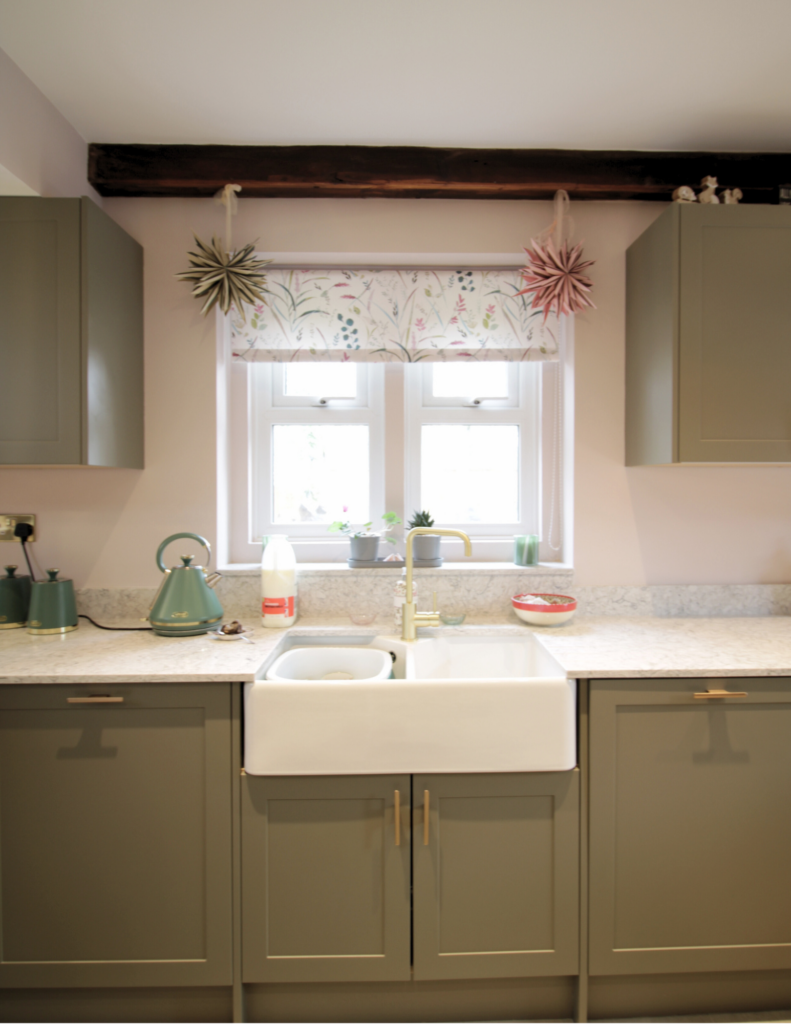
Pros: Durable, generously sized, and characterful
Cons: Require bespoke cabinetry and can chip with heavy use
Ideal for: Traditional kitchens, utility rooms, or creating a nostalgic feel with modern practicality.
Farmhouse sinks follow the same apron-front design as Belfast and Butler styles, but they come in a wider range of materials like stainless steel, stone, or composite granite.
This mix of charm and versatility means you can enjoy the “country kitchen” feel in a more contemporary palette. A brushed metal farmhouse sink, for example, looks stunning in a modern monochrome space.
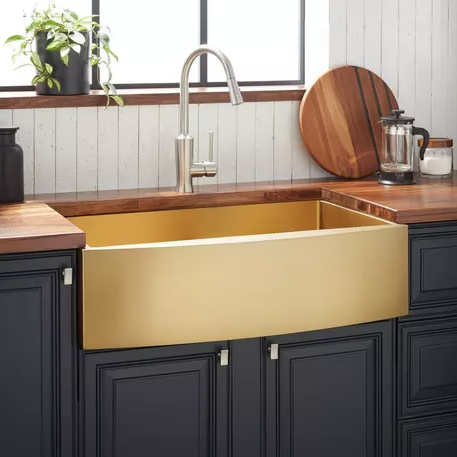
Pros: Spacious, visually striking, available in more finishes
Cons: Heavier models need strong base units and extra support
Ideal for: Those who want rustic charm with a modern twist.
An inset sink sits into a pre-cut hole in your worktop, with a visible lip or rim around the edge. This is the most familiar sink style, and it’s particularly practical in kitchens with laminate or timber worktops, where undermounts aren’t suitable.
From stainless steel to black composite, inset sinks come in a huge variety of finishes, bowl configurations, and price points.
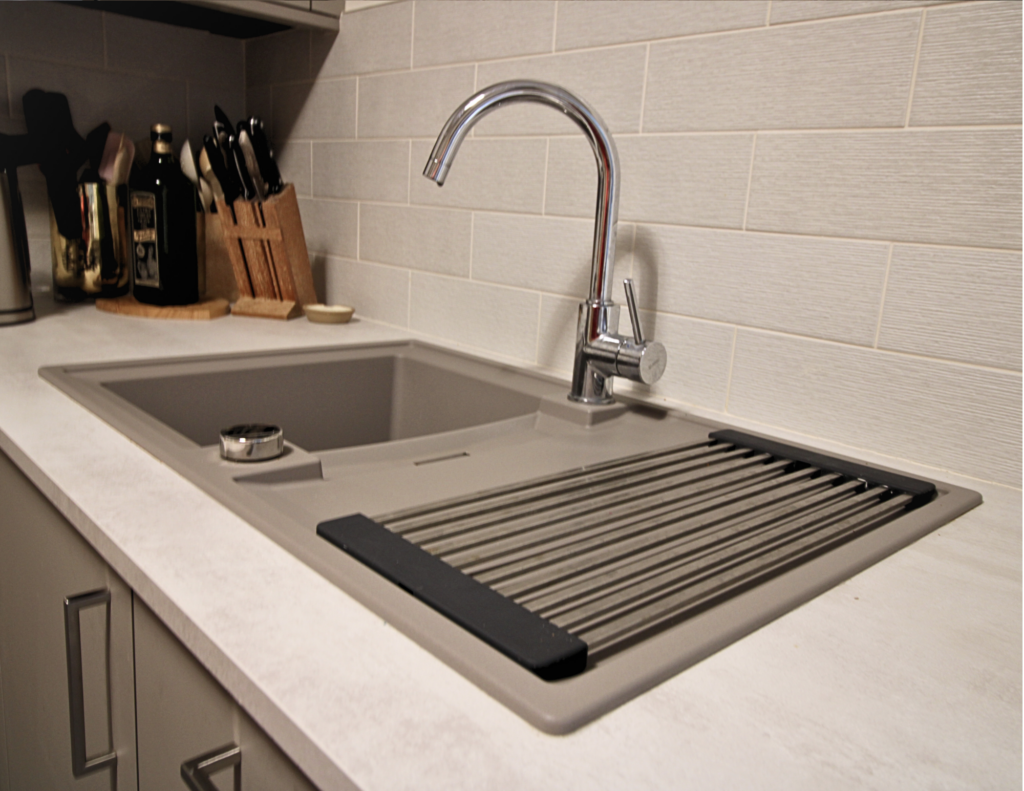
Pros: Affordable, easy to fit, flexible in terms of layout
Cons: The rim can collect crumbs and water over time
Ideal for: Classic family kitchens or where budget and practicality are key.
For a cleaner, more contemporary look, undermount sinks are fitted beneath the worktop meaning there’s no visible rim. This style works especially well with solid surfaces like quartz, granite, or composite stone, allowing you to sweep crumbs and spills directly into the sink without obstruction.
Often paired with a seamless worktop drainer or grooves cut into the surface, undermounts offer understated sophistication.
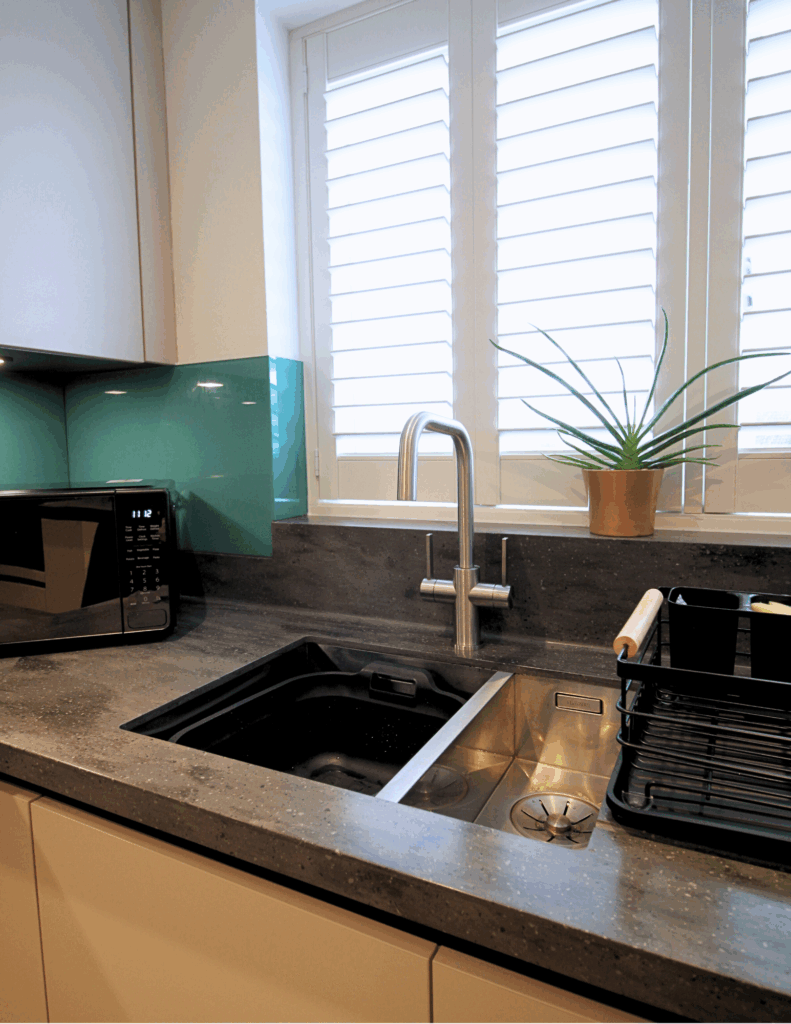
Pros: Sleek appearance, hygienic and easy to clean
Cons: Not suitable for laminate worktops, more complex installation
Ideal for: Minimalist, high-end kitchens where every detail is refined.
Single Bowl
Perfect for a minimalist look, especially when paired with a boiling water tap. Best suited to people who rely on their dishwasher but need space for occasional deep washes.

1.5 Bowl
The most versatile option, with a main bowl and smaller side bowl for rinsing, draining, or disposing of food waste. A practical solution for busy homes.
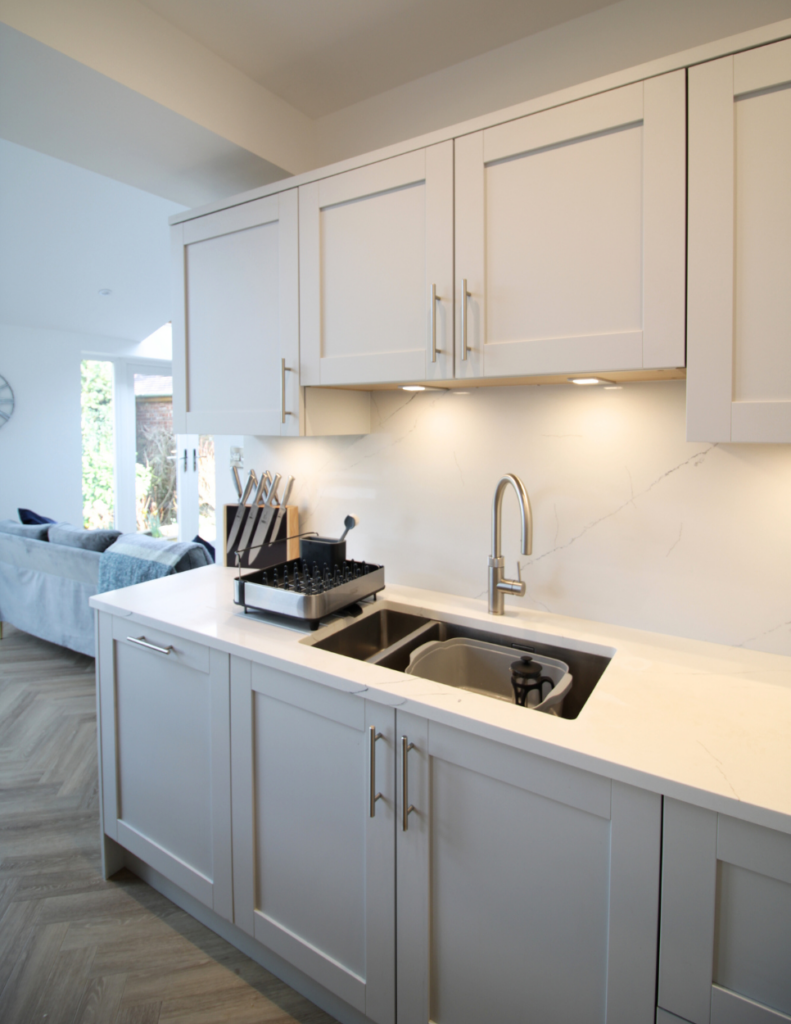
Double Bowl
Ideal if you do a lot of washing by hand or want a dedicated prep and clean space. You’ll need a wider base unit, but it’s incredibly efficient for multitasking.
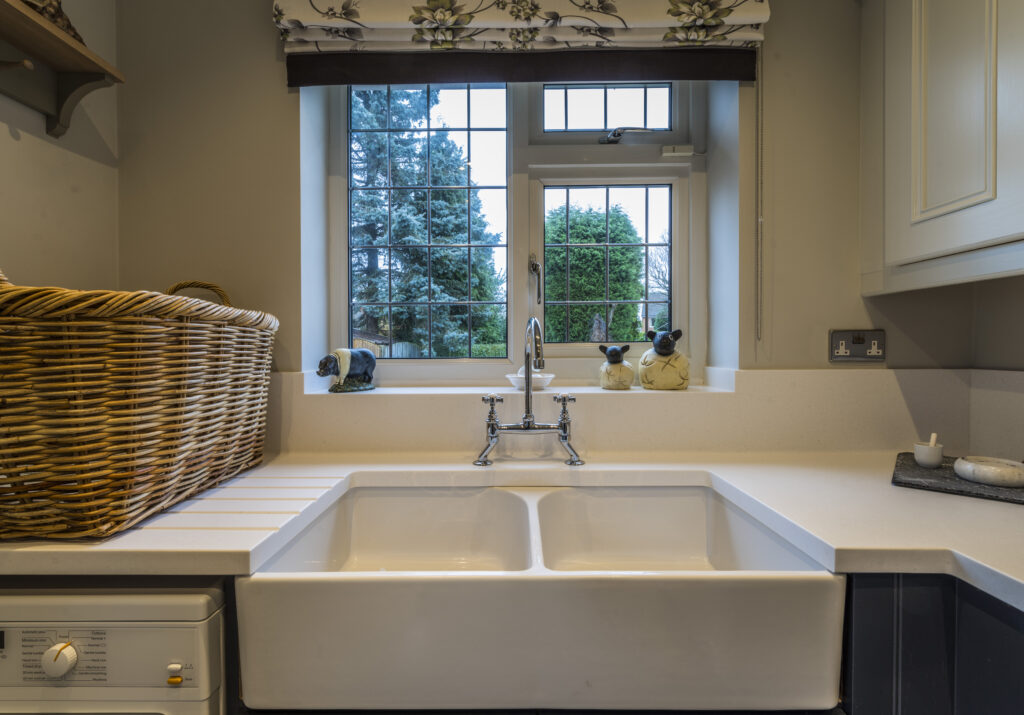
| Material | Look & Feel | Considerations |
|---|---|---|
| Ceramic / Porcelain | Traditional and glossy. Great for farmhouse styles. | Heavy and can chip with hard impacts |
| Stainless Steel | Sleek, neutral and hygienic. | Can show watermarks or scratches |
| Granite Composite | Textured, durable, available in black, white, and grey. | Stylish and scratch-resistant but higher in cost |
| Cast Iron (Enameled) | Classic, substantial, with a deep glossy finish. | Needs sturdy cabinetry and occasional TLC |
Choosing the right kitchen sink is about more than looks it’s about finding a style, size, and material that fits seamlessly with the way you live and cook. Whether you’re drawn to the classic charm of a Belfast sink or the clean lines of an undermount option, your sink plays a central role in both the form and function of your kitchen.
But no sink is complete without the right tap to match. From pull-out sprays to boiling water taps, our Ultimate Guide to Kitchen Taps will walk you through all your options.
Still deciding what’s best for your space? Pop into our showroom to explore a range of sinks, taps, and kitchen displays in person. Our design team would love to chat through your project and help you choose the perfect finishing touches.

The size of your sink should reflect the size of your kitchen and how you use it. In compact kitchens, a single bowl or 1.5 bowl might be more practical, while larger spaces can accommodate double bowls or statement farmhouse sinks. If you do a lot of cooking and washing up by hand, a deeper or wider sink may be worth the extra space.
Inset sinks are dropped into a pre-cut hole in the worktop, with a visible rim resting on the surface. They’re easier to install and work with any material. Undermount sinks sit beneath the worktop, creating a seamless look—but they require solid surfaces like quartz or granite and more precise installation.
No, in fact, undermount sinks can be easier to keep clean because you can wipe crumbs and spills directly into the sink from the worktop. However, proper sealing is important to avoid water getting between the sink and the worktop edge.
In many cases, yes—if you choose a new sink that’s the same size and type (inset, for example). However, changing to an undermount or a different shape may require a new worktop or modifications, so it’s best discussed with your kitchen fitter or designer.
These styles are heavier and deeper than standard sinks, so they often require a reinforced cabinet and custom base unit. They’re best planned as part of a new kitchen or major renovation. You’ll also need to factor in drainage, plumbing alignment, and worktop height adjustments.
If you’re replacing like-for-like (same size and style), installation can often be done in a few hours. For new kitchens or when changing styles (e.g. from inset to undermount), it may take longer due to custom fitting, plumbing adjustments, or worktop modifications
Regular cleaning with a non-abrasive cleaner and soft cloth will keep most sinks looking their best. Stainless steel can benefit from occasional buffing to reduce water marks, while ceramic sinks may need more care to avoid chips. Avoid using harsh chemicals or wire pads on any material.
Take the first step to transforming your kitchen.
Visit our showroom today.
We take care of your build